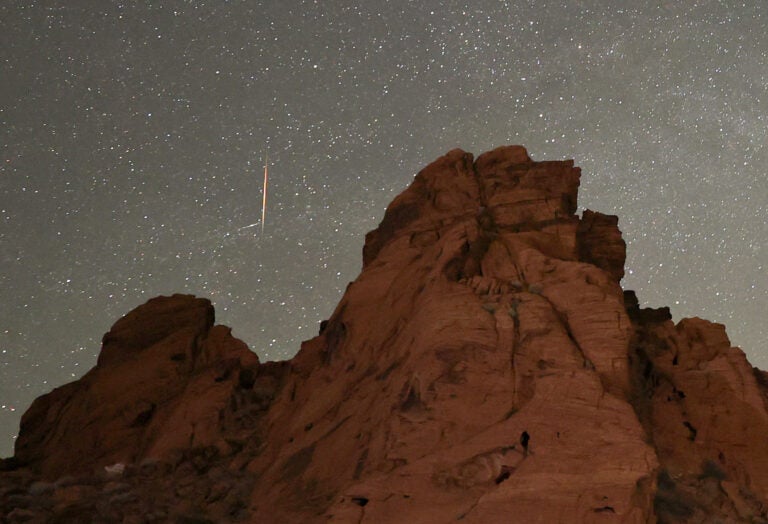A meteor shower could send fireballs streaking through the night sky this week

Look up into the sky over the next few nights and you might catch a glimpse of a passing fireball.
The Southern Taurids meteor shower is set to peak Sunday and Monday, giving viewers a chance to see what are often called shooting stars soaring above our planet.
According to the American Meteor Society, the Southern Taurids meteor shower has been active since September and is set to reach its peak activity this week.
“Space rocks” and other material hurtling through the cosmos — including pieces of asteroids, comets and even the moon or Mars — are called meteoroids. Meteoroids that enter Earth’s atmosphere are called meteors.
The Taurid meteor stream, which includes both the Southern Taurids and the Northern Taurids, comes from the Comet Enke, a 2.98 mile-wide body that orbits the sun just over every three years.
The Southern Taurids and the Northern Taurids, which are set to peak next Saturday, account for a spike in fireball reports between September and November each year, the AMS said.
“Fireball” — believe it or not — is a term actually used by NASA to describe meteors that glow as bright or brighter than Venus.
If you want to try to see a Taurid fireball this week, Space.com recommends locating a dark viewing point far from light pollution and scanning the night sky surrounding Jupiter.
And be patient: while the Taurids can churn out some extraordinarily bright fireballs, they only produce about five meteors per hour at most.
9(MDAzMzI1ODY3MDEyMzkzOTE3NjIxNDg3MQ001))



